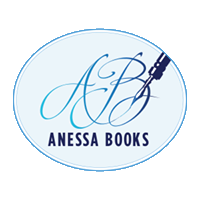 We’ve been having an interesting conversation on the Regency Fiction Writer’s Forum.
We’ve been having an interesting conversation on the Regency Fiction Writer’s Forum.
It began when one member pointed us to a fascinating post on Tumblr by “Ye Olde News,” a self-described “bored researcher.” He (she?) pointed out that 62% of all women had one of five names in early 19ᵗʰ century London—Mary, Elizabeth, Sarah, Ann, and Jane. To get close to that percentage of the population today you would have to include the top 600 names! For men, it’s the same. Most men were named John, William, Thomas, James, or George.
But as a writer, you need unique names for each character. If you gave two characters the same name readers would—understandably—get confused. That means we’ve got to be a little more creative. Happily, in the same post “Ye Olde News” lists many more names and ranks them into five tiers of popularity.
This is incredibly helpful, but authors of historical fiction still need to be careful not to run into the “Tiffany Problem.” This is where you use a name that was used in your historical time period but sounds modern. The name Tiffany dates back to the 12ᵗʰ century but readers will think it sounds contemporary. So while you may know that a name was known and used, you might want to use something that sounds more like your time period.
And then there are last names. They can be tricky as well because you can’t have too many Smiths, Browns, and Jones. Last names are also regional, so be sure to look up names from the particular place your character comes from.
Finally, for authors who have members of the peerage (dukes, marquesses, earls, etc.) the trickiest thing is to ensure that no one actually holds that title any more. There are lists of extinct titles, but even if the name you want to use is there, it’s safest to do a search for the name any way.
Names are so very important in a novel. You need to give your characters names that fit who they are in personality, in addition to everything else. To find names, I recommend these resources:

Thanks for an interesting article. There’s a similar problem in writing American historical fiction, with Martha a favorite, probably the favorite, woman’s name, in the first half of the 18th Century. I think that must have begun in acknowledgment of Martha Washington.
My books are based on real people. The Still family members migrating west together are the children of Martha Poage Moore Still (I nicknamed her Mattie), who had been named for her grandmother. She didn’t name any of her daughters Martha, but her daughter-in-law, Martha Anne Miller Still, is a key character in , which I’m writing now. I don’t know of a nickname for her, so I made up one, Marth’Anne, which is a suitable mumbling sort of name.
Another key character is Martha Elinor Morgan Yeargin, but I was happy to learn that her family called her Ellen. Yay!
Again, this is not at all researched, but the Still family women’s names clearly got more creative after about 1835, with Mattie’s two youngest daughters named Marova and Cassandra. They, in turn, named their daughters creatively. So, later 1800s culture in America may have been a richer naming environment. It certainly was for the Still family.
I think social trends in names are fascinating, but they sure can be a challenge.
Thanks for sharing, Caroline. That was very clever of you to give each Martha a different nickname so the reader could tell them apart!